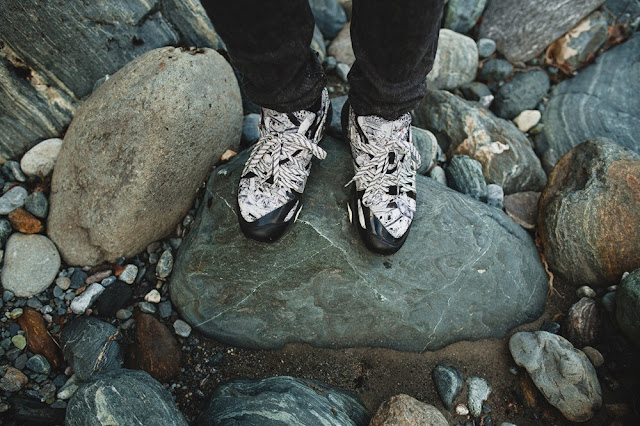Separates Good Beginner Climbing Shoes from Intermediate and Advanced Models?
Rock climbing is an exciting outdoor activity that has seen a major increase in popularity over the last decade.
As a beginner looking to safely progress in the sport, having a quality pair of rock climbing shoes mens that match your ability level is crucial.
But what exactly makes beginner shoes different from intermediate and advanced options?
This guide will highlight the key distinctions to help you select the right footwear as you develop new skills.
We’ll compare crucial shoe components across three experience levels, so you can feel well-informed for your purchase. Key factors we’ll explore include:
Durability and Materials
Shape and Profile
Stickiness and Friction
Sensitivity and Precision
Fit and Sizing
Durability and Materials
When just starting out, beginner rock climbing shoes need to be durable above all else to withstand new climber mistakes.
The uppers are typically thicker leather rather than soft premium synthetics, offering enhanced longevity and protection.
The rubber outsoles also tend to be thicker with a flat shape that evenly distributes contact across the sole. This makes them more resistant to wear from irregular foot placements.
Once basics are mastered after a year or so, intermediate shoes transition to thinner materials and a more precise fit.
Premium synthetics stretch less over time, maintaining a highly sensitive instep and toe box.
The slightly downturned asymmetric shape better supports complex techniques like edging or heal hooking.
Rubber thickness decreases for added sensitivity, though still offers ample bite on varied rock types.
Finally, advanced shoes feature highly specialized properties optimized for sending challenging routes.
Uppers utilize single layer microfiber or full mesh wrapping tight to each toe. Extreme downturns put significant pressure on toes for steep overhangs.
The rubber incorporates sticky mixtures for small grippy edges, with expert precision required due to minimal durability.
Shape and Profile
Another key factor setting beginner shoes apart is a flatter profile focusing less pressure on the toes. This reduces strain while building ankle strength and flexibility over the first 6-12 months.
As skill improves, moderate asymmetry places additional tension on toe power, training advanced techniques. Finally, expert models enable challenging overhang routes via extreme downturns and thin soles to push toe strength limits.
Stickiness and Friction
Rubber stickiness often correlates directly with climbing ability, as sticky soles provide greater grip and control on tiny holds.
Beginner models need versatile all-around rubber able to smear slab, edge cracks and grip varied features. The focus is on flat shoes offering a broad sticky contact surface.
As skills progress, intermediate shoes incorporate moderate edge durability with improved friction sensitivity from a thin layered rubber under the toes. This supports precise painful footholds on overhangs and small chips.
Finally, advanced shoes use ultra-soft, high friction rubber that offer unparalled grip at the cost of longevity. Perfect for redpointing a cutting edge sport route, but the rubber will quickly wear from everyday use.
Sensitivity and Precision
In terms of feedback and control, beginner models provide a stable platform to stand on while learning.
A stiff midsole combined with thicker flat rubber make it easier to trust edging at first.
After 12-24 months, intermediate shoes feature moderate downturns bringing toes closer to the rock. Thinner rubber under toes amps friction and sensitivity to push movement finesse.
Finally, highly advanced shoes offer a barely-there sensation underfoot, perfect for gymnastic movements on volumes and plastic holds.
The ultra-thin soles provide a barefoot-like feel of the exact rock textures reacting to micro foot adjustments.
This requires expert strength and technique to leverage properly.
Fit and Sizing
New climbers benefit from a more relaxed fit offering adjustability as you dial in preferences over several months.
Beginner shoes often fit street shoe size with a little room to account for foot swelling and sock thickness.
Intermediate shoes take advantage of synthetic stretch by downsizing .5-1 full sizes. This dialed fit optimizes edging power and stability when pulling hard on tiny chips.
Advanced shoes are sized 2+ sizes down from street shoes for an almost painful precision fit. The tight toes support elite levels of toe strength and power.
Most outdoor shops offer testing walls to carefully assess different sizes and models across brands before you buy.
Be sure to test on actual rock though to evaluate friction, flexibility and comfort.
In Summary
Progressing safely as a rock climber relies heavily upon having the right shoes for your current ability and training focus.
While it may be tempting to buy elite level shoes too early, resist the urge and build fundamental skills first.
Be sure to consult a qualified sales specialist at your local gear shop to analyze your climbing objectives and experience.
This ensures the shoes you select offer the ideal blend of durability, shape, rubber friction, sensitivity and fit needed to balanced progression at each stage.





Comments
Post a Comment